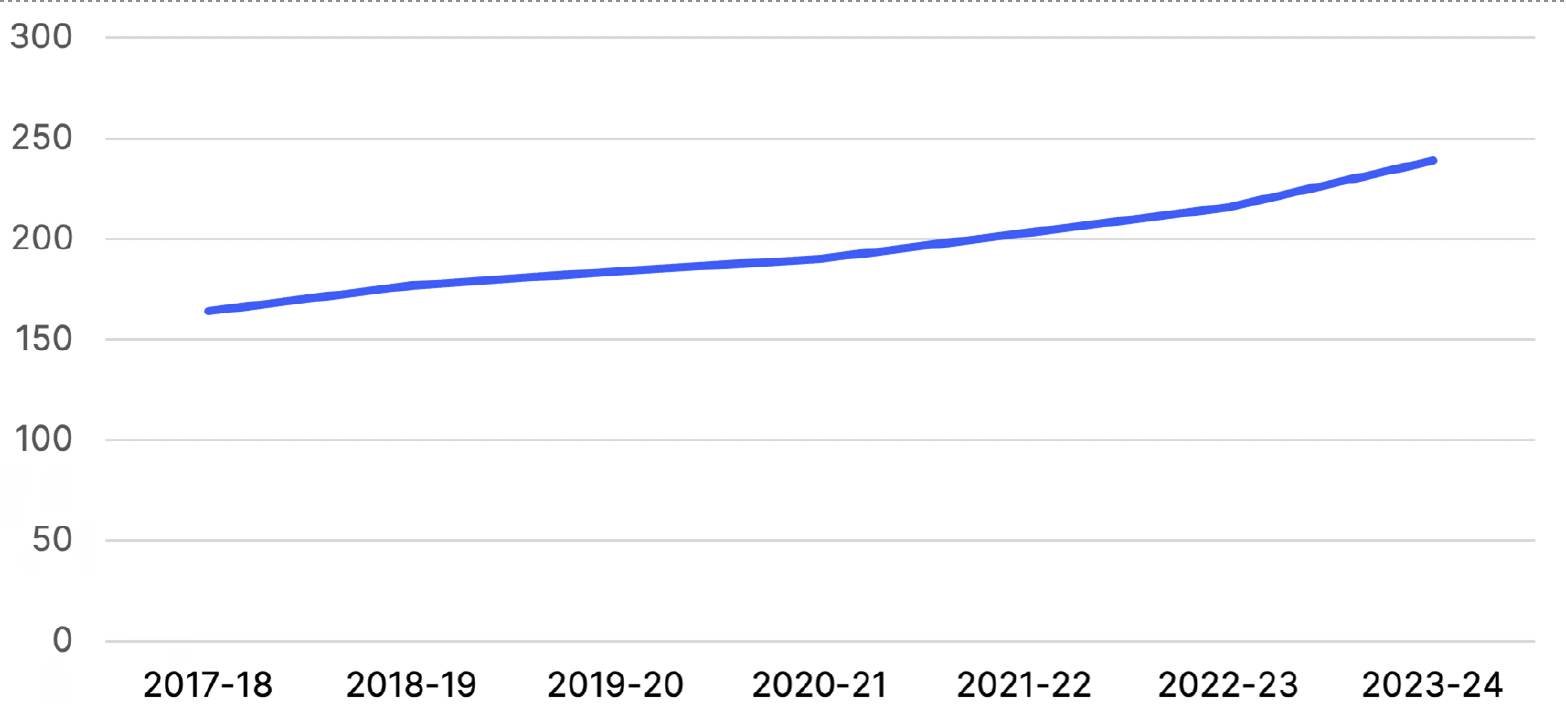Gauging gas-based power’s role in meeting India’s peak electricity demand
Download Briefing Note
View Press Release

Key Findings
Rapidly rising peak power demand has resulted in the Indian government taking proactive measures, including relying on gas-based power, to ensure there is no supply shortfall.
Allocating more domestic gas to gas-based power plants or allowing the blending of liquefied natural gas (LNG) with domestic fuel could improve the affordability of the gas-fired electricity needed to meet peak demand.
Ongoing trends, such as increased deployment of renewable energy assets, improving economies of scale for battery storage and the rise of round-the-clock tenders with more competitive bidding rates for firm and dispatchable renewable energy (FDRE) point to the diminishing role of gas-based power plants for meeting peak power needs in the medium-term.
Introduction
India’s peak power demand, which, according to government forecasts, is likely to cross 350 gigawatts (GW) by 2030, has been surging in the past few years on the back of rising urbanisation, increasing industrial activity and erratic weather patterns.
Since recovery started after the COVID-19 lockdowns, India’s electricity demand has surged. Peak power demand touched a new high of 240GW in the fiscal year (FY) 2023-24. Figure 1 shows the constant increase in peak demand, which has risen by almost 150% from FY2017-18 to FY2023-24. The government expects it to hit 260GW in FY2024-25. For June, the government forecasts peak demand at 240GW during the daytime and 235GW in the evening. However, soaring temperatures led to peak demand touching 240GW in May itself.
As a result, the government is undertaking several measures in the short to medium term to prevent a peak supply shortfall, especially during the summer. To meet the immediate peak power demand, the government is shifting the planned maintenance of power plants to the monsoon season, expediting capacity additions and reducing partial outages of thermal power plants. It is also looking to optimise hydropower generation and has directed power stations to provide surplus energy to energy exchanges. Increasing renewable energy penetration will also help meet peak power demand in the medium term due to the shifting of peak demand to daytime. Above all, the government is ensuring that all available plants are operational, including gas-based power plants that have either been underutilised or non-operational due to fuel constraints.
Figure 1: India’s Peak Power Demand FY2017-18 to FY2023-24
 Source: Ministry of Power
Source: Ministry of Power
This note analyses the role that gas-based power has in meeting the peak power demand in India. We find that it has a limited role in the short-term, which is likely to diminish in the mediumterm as energy storage options gain commercial viability. We base our findings on emerging trends in the shifting of peak demand hours and the cost-analysis of using gas-based power.















